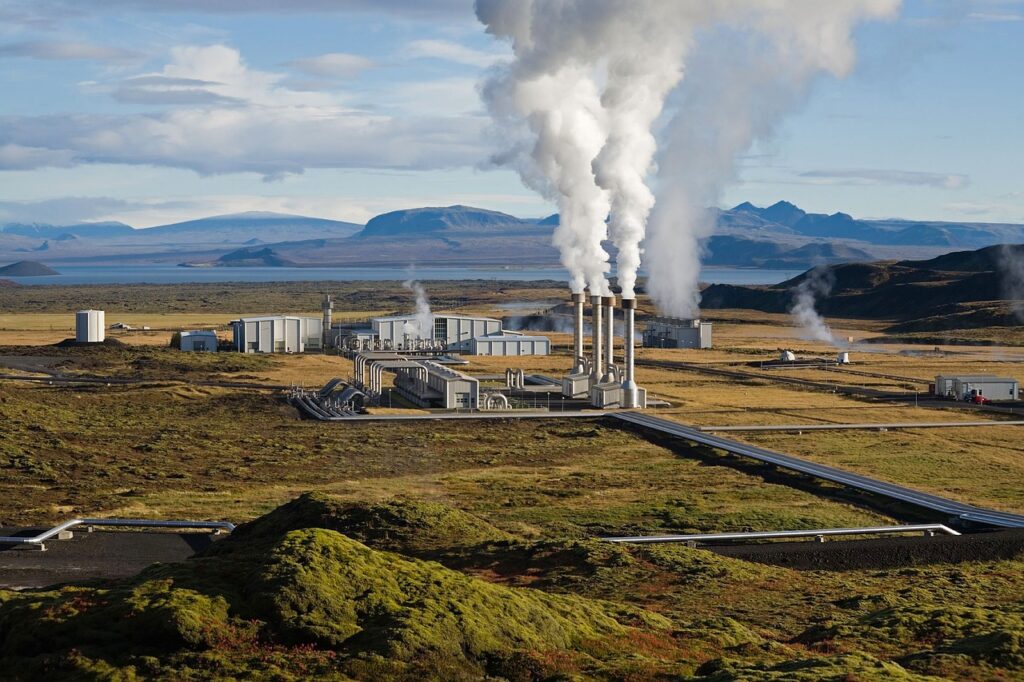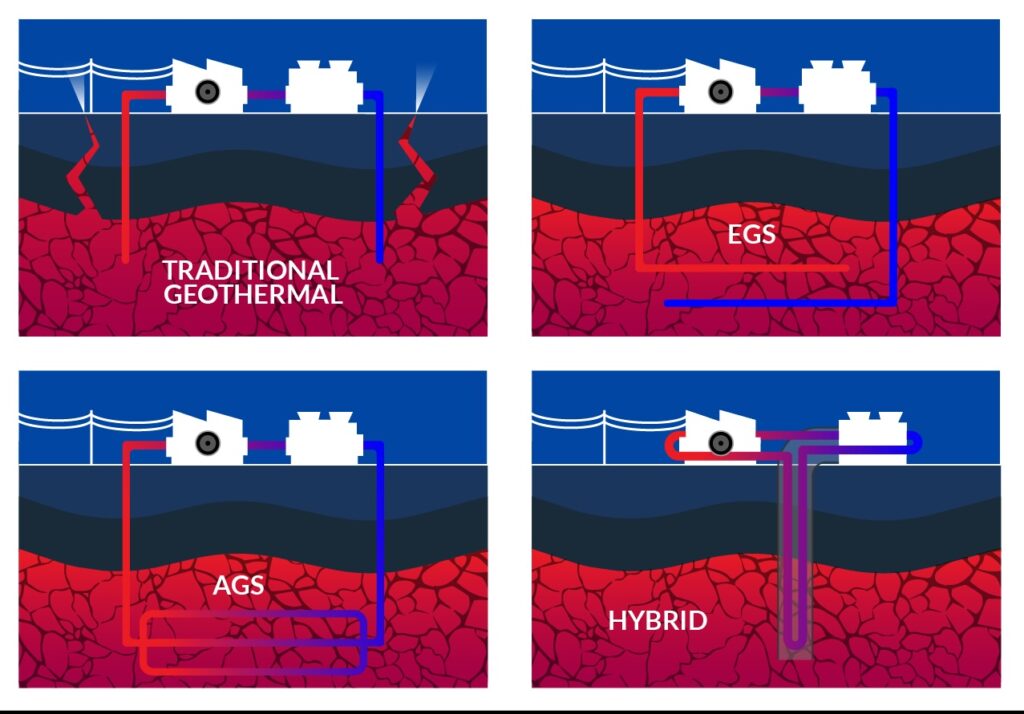
Geothermal energy is clean and essentially unlimited (at least until the Earth is swallowed by the Sun in about 7.59 billion years when the Sun expands into a red giant and engulfs our planet)! In the meantime, the core of our planet will continually generate thermal energy that can be used for generating power that is stable, reliable, and constant, unaffected by season, climate, or weather.
Conventional geothermal energy is largely produced by hydrothermal systems, which consist of hot water circulated in deep-seated permeable rocks. Most existing geothermal plants have been built in areas with naturally occurring high temperature subsurface water, such as volcanic regions. But while conventional hydrothermal systems typically rely on natural fractures and fluid to bring geothermal heat to the surface, unconventional approaches use engineered reservoirs.
The most promising technology to make geothermal energy accessible in regions where high temperature subsurface water was previously considered inaccessible is known as EGS (Enhanced Geothermal Systems, or Engineered Geothermal Systems). EGS enhances the permeability of underground rocks to release the heated water through hydraulic, chemical, and thermal stimulation, useful in geological settings that have high sub-surface temperatures but where fluid volumes and/or rock permeability aren’t sufficient to make extraction economically viable. The process involves pumping fluids (like water or carbon dioxide) to fracture the rock and create an artificial reservoir. In other words, a form of “fracking”, similar to the process used to extract methane gas from underground reservoirs.
According to the US Department of Energy (DOE), “Enhanced geothermal systems (EGS), or human-made geothermal energy, holds the potential to power more than 65 million American homes and businesses, and is the next frontier for renewable energy deployment.” DOE’s “Enhanced Geothermal Shot™” is a department-wide effort to dramatically reduce the cost of EGS by 90%, to $45 per megawatt hour by 2035. They say that “…investments in EGS can unlock affordable clean energy for over 65 million American homes and exponentially increase opportunities for geothermal heating and cooling solutions.”
Geothermal power plants can provide dispatchable, flexible electricity. The next-generation geothermal plants can ramp generation up and down over a few minutes and can run for as long as necessary to ensure the reliability of the grid, thanks to advanced well flow control and power system setups.
Nothing comes without a cost, however, and there are some disadvantages to geothermal power generation. Although the process doesn’t release greenhouse gases itself, naturally occurring gases stored under the Earth’s surface can be released into the atmosphere during drilling (although these emissions are still far lower than those associated with fossil fuels).
And of course, like any form of subsurface fracturing, there is the risk of triggering earthquakes. The problem is more prevalent with enhanced geothermal power plants, which force water into the Earth’s crust to open up cracks to release underground heated water.

| A newer technology, called Advanced Geothermal Systems (AGSs), uses deep, large, artificial closed-loop circuits in which a working fluid is circulated and heated by sub-surface rocks through conductive heat transfer. For all practical purposes, these systems are deep closed-loop heat exchangers. This system does not require fracturing subsurface rocks, avoiding the likelihood of causing earthquakes. It also uses less water in the process than EGS systems. However, AGS technology is still in its infancy, and has not reached the maturity that would make it viable at industrial scale. Test projects have proven the viability of the technology, however. Apart from electricity generation, geothermal has a range of direct use applications, including district heating and industrial processes in agriculture and manufacturing. It can also contribute to decarbonizing other processes by directly utilizing its heat to preheat water in the electrolysis process, making it a more efficient and cost-effective method for creating clean, “green” hydrogen. Geothermal energy is relatively expensive resource, although over the long term costs come down as maintenance costs are very low (there are geothermal plants in areas where hot subsurface water is easily reached that have been operating for nearly 100 years). Currently the cost per kilowatt for geothermal is about $3000, similar to hydropower. This compares to over $4000 for coal, $6500 for nuclear, and roughly $1200 for methane (“natural”) gas. Startup costs for geothermal energy plants can be reduced, however, by using retired oil and gas wells to reach the heat below. The U.S. Department of Energy Geothermal Technologies Office’s (GTO) GeoVision analysis found that geothermal electricity generation has the potential to increase at least 26-fold by 2050. Bringing more geothermal electricity online by leveraging existing oil and gas wells can be a critical step to meeting the our climate goals. |